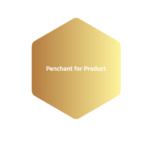In my last post, I shared some guidelines for developing product strategy. The best way to communicate the product strategy is through a roadmap and depending on the company, Objective & Key Results (OKRs). Roadmaps are a collaborative efforts amongst the various leaders and leads that make up each product development team.
When it comes to defining the roadmap, you’ll find no shortage or articles discussing the importance of making roadmaps outcome-based as opposed to output-based. More on that later.
In the mean time, I have a few rules on roadmaps, with the most important one being:
A roadmap is not a list of features. It is not a feature delivery plan!!!
Every time I see roadmaps being conflated with feature delivery plans, I cringe a little bit. Actually, I cringe a lot and sadly, I don’t always call it out.
Here are my Do’s and Don’ts of Product Roadmaps:

For more on Now/Next/Later, I refer you to this article by Chaz Mee on why “Now/Next/Later” is one of the best frameworks for roadmapping.
With regards to outcome-based vs output-based, the gist of this is:
- Outcomes focus on and assess the impact to your users, customers, and company.
- Outputs focus on feature deliveries without much attention to the impact to customers, users, and the company.
As a product manager, I’m obviously in favour of outcome-based product management and roadmaps. However, I’ve also worked at a variety of companies and with a variety of stakeholders to know that schedules matter.
Rather than outcome versus output, I believe outcomes plus outputs communicate the fuller picture.
Outcomes plus Outputs fully express your Product Strategy
Here’s a high-level attempt at what this process could look like:
- Product Strategy is well defined and everyone is aligned.
- Product leaders and stakeholders collaborate to develop the roadmap. The product roadmap outlines problems to solve, opportunities to pursue, and communicates the product strategy.
- The product roadmap is presented using the “Now/Next/Later” format. Note: If the company changes direction, Next & Later will likely change.
- Now means that there’s commitment of people and resources as well delivery expectations over a period of time. Now could be over a quarter, 6-months, whatever makes sense for your company.
- Next means that some understanding of the problems and opportunities are underway. There’s probably some discovery work happening here.
- Later is farther in the future and presents some opportunities for consideration.
- Feature delivery plan defines the outputs. Work cross-functionally to develop a feature release plan and delivery schedule for items in the “Now” phase of your roadmap.
By following the roadmap with your feature release plan of the committed opportunities and problems, you tell a complete story. You also educate and avoid snarky remarks from grumpy non-product minded stakeholders who don’t care about anything but dates!
Key Takeaway
Evangelize the roadmap by starting with the strategy, following with the roadmap, and ending with the the feature release plan for the opportunities identified in “Now” phase.
Share this:
- Click to share on LinkedIn (Opens in new window)
- Click to share on Facebook (Opens in new window)
- Click to share on Pinterest (Opens in new window)
- Click to share on Reddit (Opens in new window)
- Click to share on Pocket (Opens in new window)
- Click to share on Twitter (Opens in new window)
- Click to print (Opens in new window)
- Click to share on WhatsApp (Opens in new window)

